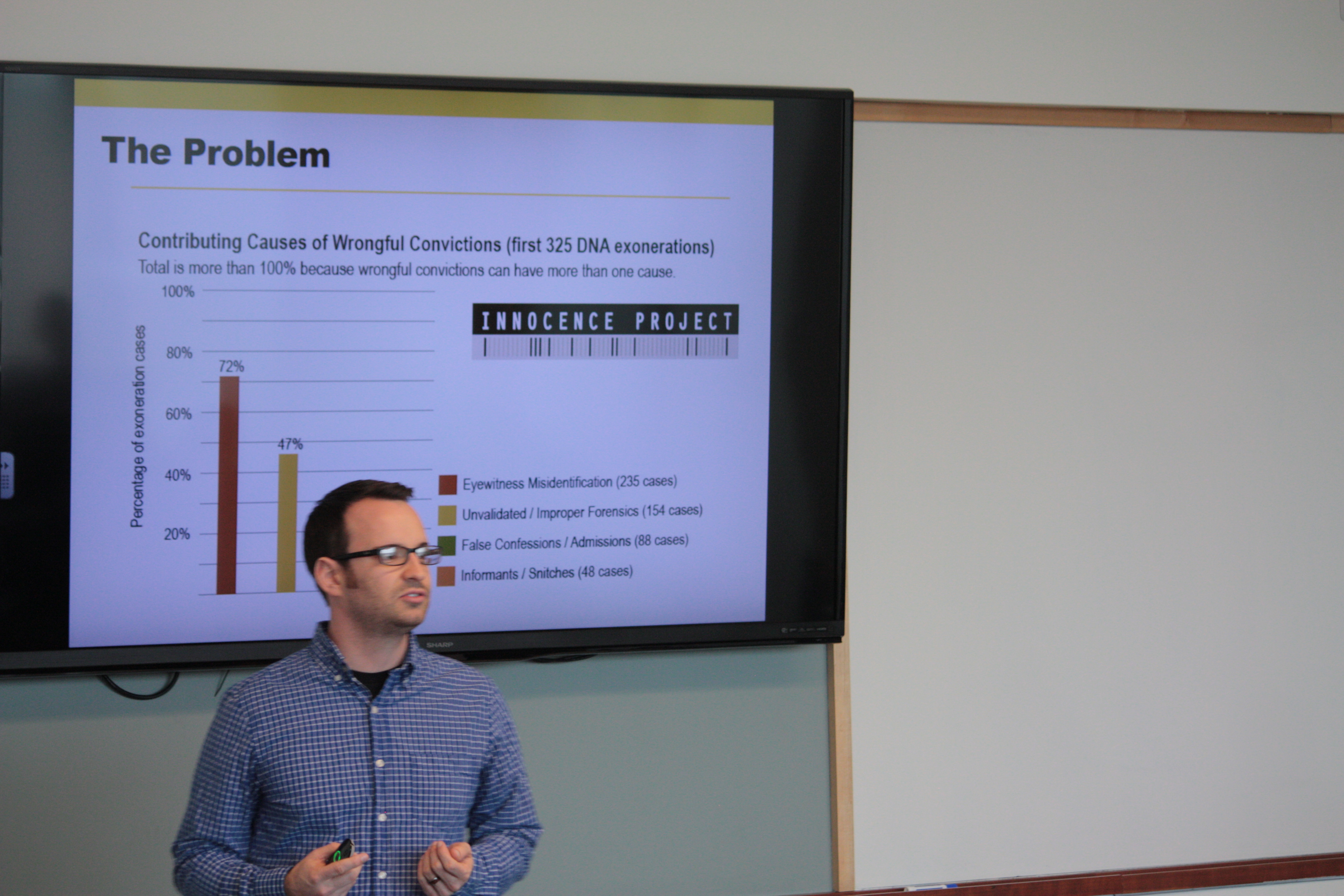
Psych. professor talks bias in forensic science
By: Bailey Hendricks, Assistant News Editor
According to a report from the National Registry of Exonerations, 2015 saw a record number of exonerations. Out of a total 149 exonerations, 26 — that’s 17 percent — were thanks in whole or in part to DNA identification evidence.
Five defendants who had been sentenced to death were exonerated, while 27 exonerations were for convictions based on false confessions.
According to the same report, 65 exonerations were related to official misconduct, and the same number involved convictions based on guilty pleas.
At a March 1 Multiculturalism in Action presentation entitled “Color-Blind Justice: Race and Cognitive Bias in the Forensic Sciences,” assistant professor of psychology Jeff Kukucka explained how cognitive bias in the forensic sciences can lead to the incarceration of innocent people.
“Keep in mind, the errors of convicting innocent people leave the victims in the world – and it’s costly – it affects all of us,” Kukucka said.
To explain this bias in the forensic sciences, Kukucka showed two baseballs autographed by former professional baseball player Mickey Mantle.
Kukucka asked the audience to determine which autographed ball they thought was real and which they thought was a fraud.
A person in the audience said they thought the ball that looked older and more worn was the authentic ball, since Mantle retired in 1968 and died in 1995.
According to Kukucka, this audience member looked at the condition of the ball, or the “extraneous evidence” to make this conclusion, and didn’t look at the craftsmanship of the autograph itself. Kukucka compared this to fingerprint examiners, and others in the forensic sciences, who may look at extraneous evidence, like the color of a suspect’s skin in a photograph, to help them reach their conclusion as to whether or not the suspect is guilty. Kukucka then asked audience members to examine two pictures of a suspect’s handwriting and determine whether or not they match.
Some people were given a picture of a white man as the suspect, and others were given a picture of a black man as the suspect. If the white suspect denied that they were guilty, audience members were more likely to say the writings didn’t match.
People took the most time to respond and were most skeptical when the black suspect denied their guilt.
Associate professor of psychology Danice Brown, who organized the Multiculturalism in Action Brown Bag speaker series, felt that the conversation was relevant to many issues that Baltimore City faces itself.
“In talking in terms of context, we are in the middle of Baltimore, that has had some of these issues,” Brown said. “So I think that Dr. Kukucka’s talk was warranted and timely.”

